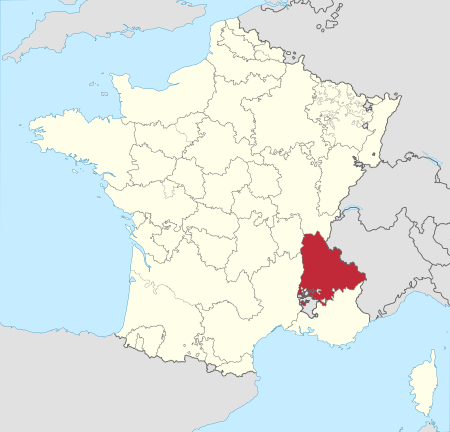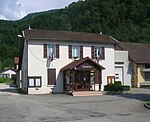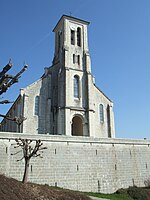Dauphiné

The Dauphiné (UK: , US: French: [dofi'ne]) is a former province in southeastern France, whose area roughly corresponded to that of the present departments of Isère, Drôme and Hautes-Alpes. The Dauphiné was originally the Dauphiné of Viennois. In the 12th century, the local ruler Count Guigues IV of Albon (c. 1095–1142) bore a dolphin on his coat of arms and was nicknamed le Dauphin (French for 'dolphin'). His descendants changed their title from Count of Albon to Dauphin of Viennois. The state took the name of Dauphiné. It became a state of the Holy Roman Empire in the 11th century. In 1349, the Dauphiné was transferred from the last non-royal Dauphin (who had great debts and no direct heir) to the future king of France, Charles V, through the purchase of lands. The terms of the transfer stipulated that the heir apparent of France would henceforth be called le Dauphin and included significant autonomy and tax exemption for the Dauphiné region, most of which it retained only until 1457, though it remained a province until the French Revolution. Dauphin of France remained the title of the eldest son of a king of France and the heir apparent to the French crown until 1830. The historical capital is Grenoble and the other main towns are Vienne, Valence, Montélimar, Gap and Romans-sur-Isère. The demonym for its inhabitants is Dauphinois.
Excerpt from the Wikipedia article Dauphiné (License: CC BY-SA 3.0, Authors, Images).Dauphiné
Rue du Vieux Porche, Grenoble
Geographical coordinates (GPS) Address Nearby Places Show on map
Geographical coordinates (GPS)
| Latitude | Longitude |
|---|---|
| N 45.383333333333 ° | E 5.7333333333333 ° |
Address
Rue du Vieux Porche
Rue du Vieux Porche
38380 Grenoble
Auvergne-Rhône-Alpes, France
Open on Google Maps










